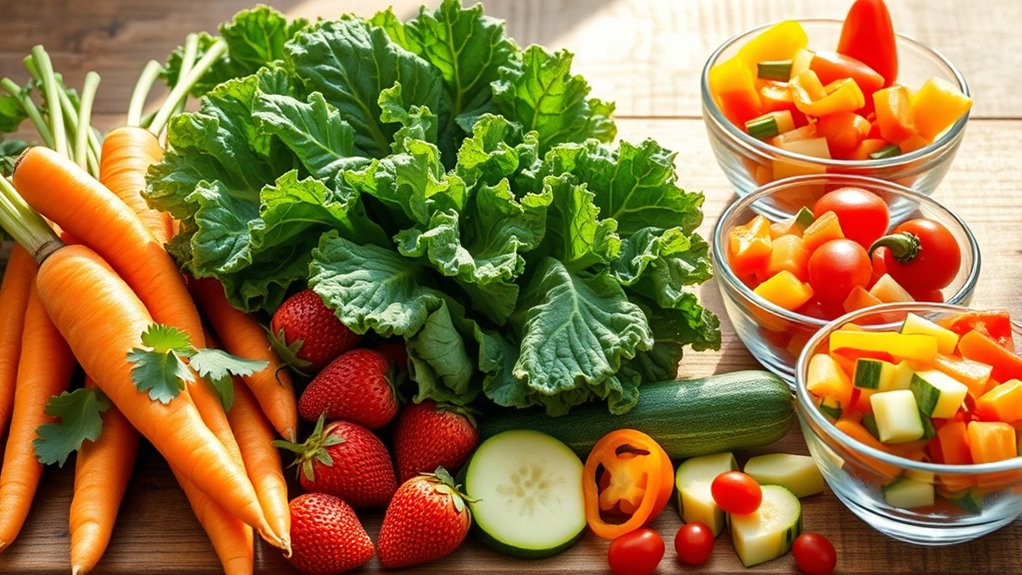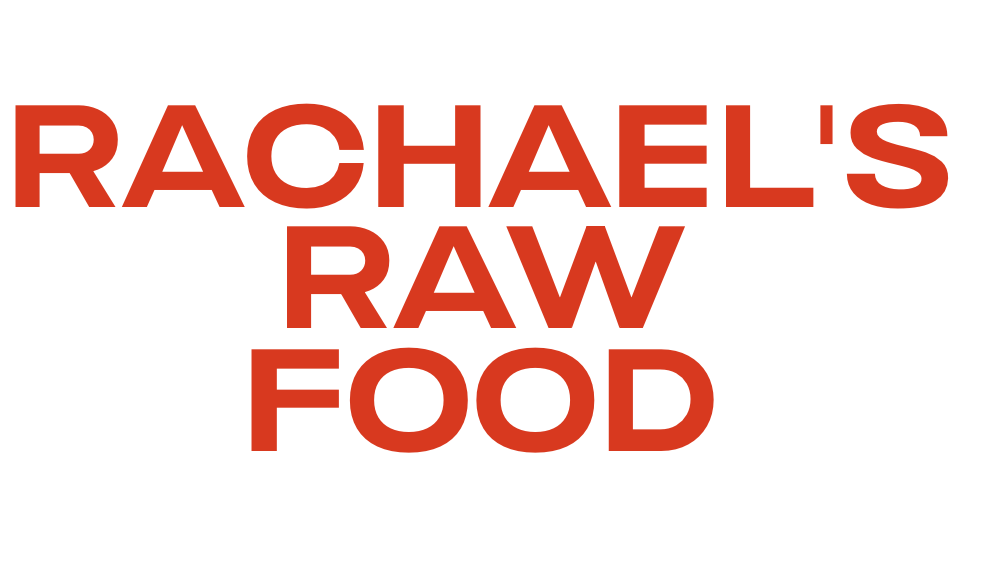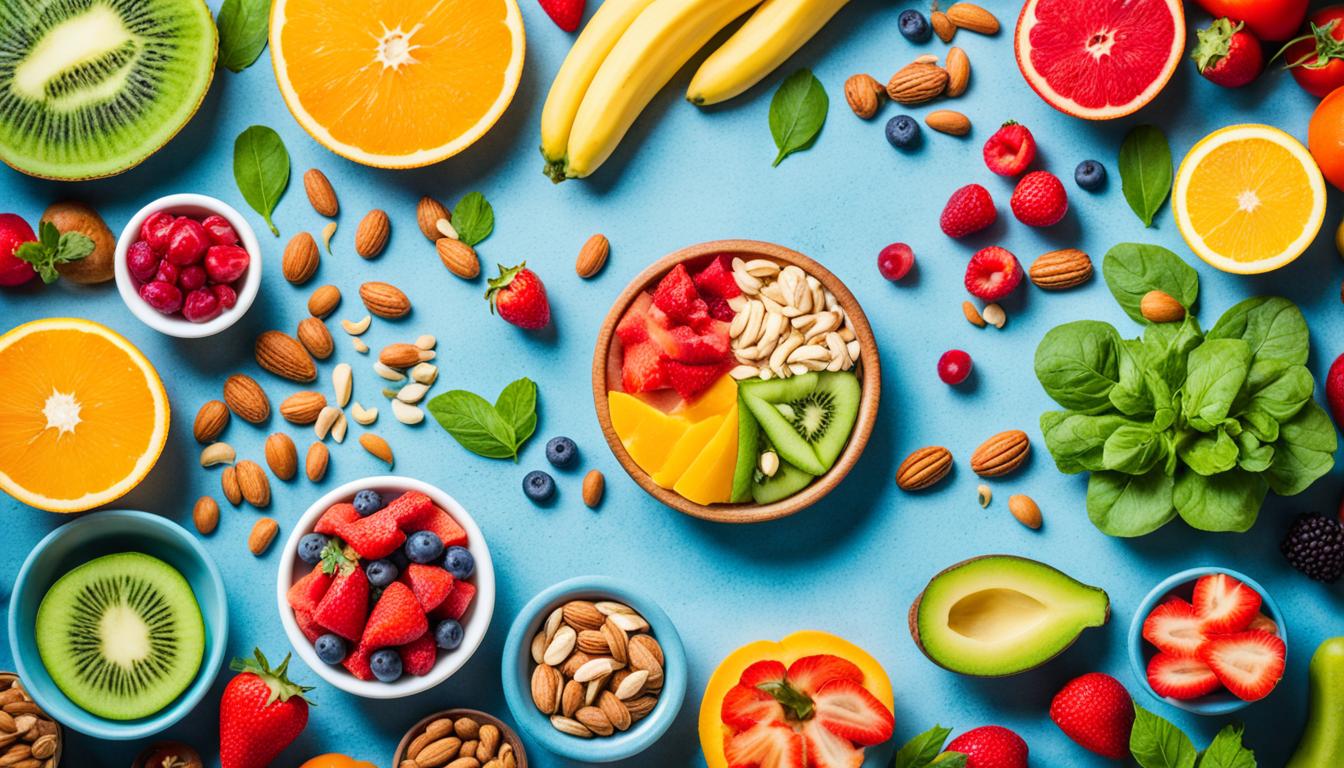To start a raw food diet, focus on fresh, unprocessed ingredients like fruits, vegetables, nuts, and raw meats. Plan your meals ahead to guarantee variety and freshness while maintaining proper storage and cleanliness to prevent foodborne illnesses. Use separate utensils for raw meats and produce, wash everything thoroughly, and keep foods refrigerated or frozen. As you continue exploring, you’ll discover more tips to make your raw food journey safe and enjoyable.
Key Takeaways
- Start gradually by adding more raw fruits and vegetables to your meals, replacing cooked items over time.
- Prioritize food safety by thoroughly washing produce and handling raw ingredients with proper hygiene.
- Plan balanced meals that include a variety of raw foods, such as nuts, seeds, and sprouts, to meet nutritional needs.
- Use proper storage techniques, like refrigeration and freezing, to maintain freshness and prevent spoilage.
- Educate yourself on which foods are safest to eat raw and when cooking might be necessary to ensure safety.

Have you ever wondered what makes raw food so appealing and popular? “Raw 101” helps you understand the basics of consuming raw ingredients, from fruits and vegetables to meats and grains. When you start exploring a raw food diet, one of the key aspects you’ll need to focus on is meal prep. Preparing raw meals requires some planning to guarantee you’re getting a balanced mix of nutrients and that your ingredients stay fresh. It’s vital to organize your shopping and prep time efficiently, so you’re always ready with healthy options. Investing in proper storage containers and keeping produce refrigerated or frozen can help maintain freshness and prevent spoilage. As you build your meal prep routine, you’ll find it easier to stick with your raw diet, reducing the temptation to reach for processed or cooked foods.
Food safety is another essential component you can’t overlook when shifting to raw eating. Raw foods, especially meats, seafood, and dairy, can harbor harmful bacteria if not handled correctly. Always wash fruits and vegetables thoroughly under cold running water to remove dirt, pesticides, and potential pathogens. For meats and seafood, proper handling is critical; keep them cold, clean your work surfaces frequently, and avoid cross-contamination by using separate cutting boards and utensils. Freezing certain raw meats can also reduce the risk of parasites. Additionally, being mindful of expiration dates and inspecting produce for signs of spoilage helps prevent foodborne illnesses. When in doubt, cooking certain ingredients might be safer, but if you choose to eat them raw, ensure your sources are reputable and your preparation techniques prioritize safety. Incorporating proper food handling practices is essential for maintaining health and safety on a raw food diet.
As you learn more about raw eating, you’ll realize that meal prep and food safety go hand in hand. Preparing meals in advance allows you to control ingredient quality and storage conditions, greatly reducing health risks. Incorporate a variety of raw fruits, vegetables, nuts, seeds, and sprouts into your diet to keep things interesting and nutritionally balanced. Keep your workspace clean, wash all produce thoroughly, and store foods at the correct temperatures to prevent bacteria growth. As you become more experienced, you’ll develop a keen sense of which foods are best eaten raw and how to handle them safely. This way, you can enjoy the vibrant flavors and health benefits of raw foods without compromising your well-being. Remember, starting raw is a journey—patience and attention to safety will help you succeed.
Frequently Asked Questions
How Do I Ensure I’m Getting Enough Protein on a Raw Food Diet?
To guarantee you’re getting enough protein on a raw food diet, focus on incorporating plant-based proteins like nuts, seeds, sprouts, and leafy greens into your meals. You can also explore supplement options, such as raw protein powders or spirulina, to boost intake. These choices help meet your protein needs naturally and effectively while keeping your diet raw and plant-based. Remember to vary your sources for balanced nutrition.
Are There Any Specific Fruits or Vegetables to Avoid?
Think of choosing produce like steering through a garden; some plants, like toxic produce and allergenic foods, can cause more harm than good. You should avoid fruits like unripe papaya or certain berries that may carry toxins, and vegetables like raw green potatoes or rhubarb leaves, which are toxic. Stay informed about allergenic foods like strawberries or celery, and always wash thoroughly to reduce exposure to pesticides and contaminants.
How Do I Handle Social Situations While Eating Raw?
When maneuvering social situations while eating raw, focus on social dining tips that make you comfortable. Practice raw food etiquette by bringing your own dishes or snacks, and politely explaining your choices if needed. Stay confident and positive, showing that your dietary choices are about health and values. Remember, most people appreciate honesty and effort, making social dining enjoyable without feeling out of place.
Can I Maintain My Energy Levels During the Transition?
Imagine your energy as a car engine—smooth and steady? During your shift, meal planning becomes your fuel, ensuring you stay powered up. Incorporate natural energy boosters like fruits, nuts, and leafy greens daily. While some feel a dip initially, sticking to nutrient-dense foods helps maintain your stamina. With patience and mindful choices, you’ll keep your engine running strong, even as you embrace this exciting new lifestyle.
What Are Common Mistakes Beginners Make When Starting Raw Eating?
When starting raw eating, you might make mistakes like neglecting proper meal planning or ingredient sourcing. Without planning, you could end up hungry or lacking variety. Relying on poorly sourced ingredients affects taste and nutrition. To succeed, focus on sourcing fresh, high-quality ingredients and plan your meals ahead. This way, you stay energized, enjoy your food, and smoothly shift into a raw food lifestyle.
Conclusion
Switching to a raw food diet might seem overwhelming at first, but remember, you don’t have to do it all at once. Take small steps, experiment with new recipes, and listen to your body. The benefits—more energy, better digestion, and vibrant health—are worth the effort. With patience and curiosity, you’ll find that embracing raw foods becomes a rewarding, natural part of your lifestyle. Trust yourself—you’ve got this!










